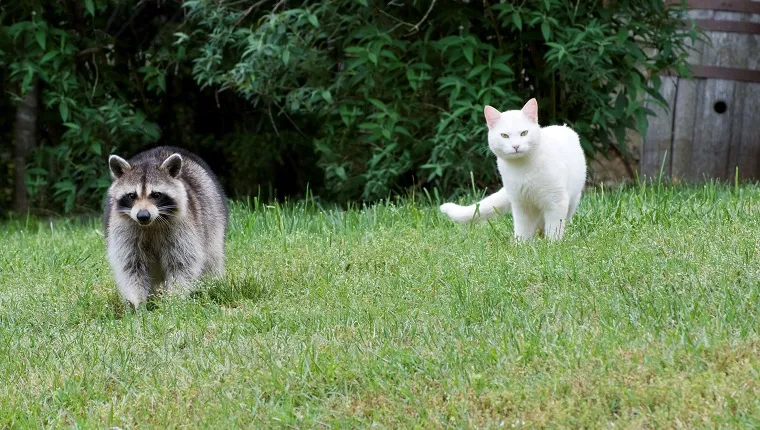Hello, fellow cat guardians and wildlife enthusiasts! Cats are natural explorers, and while they often stick close to home, they can sometimes find themselves face-to-face with wildlife. In this expert article, we’re going to explore the top 10 wild animals that might have a tiff with your pet feline and discuss how to keep your cat safe from these potential encounters. Let’s dive in, shall we?
Wild Neighbors vs. Curious Cats
Cats are known for their inquisitive nature, and sometimes, their adventures lead them into the realm of wildlife. While most wild animals would rather avoid a confrontation, here are the top 10 that might not be too thrilled to see your cat on their turf.
Coyotes
The Night Prowlers
Coyotes are clever and opportunistic predators, known to venture into urban areas. Cats that roam freely during the night may encounter these wily creatures.
Foxes
Sly and Agile
Foxes are nimble and cunning hunters. They might see your cat as competition or even a potential meal, so it’s best to keep your feline friend indoors during their active hours.
Hawks
Sky-High Dangers
Hawks are formidable raptors with keen eyesight. Smaller cats and kittens could be seen as prey, so keeping your cat indoors or under supervision is essential.
Owls
Silent Predators
Owls are stealthy hunters of the night. Small cats might be vulnerable to owl attacks, especially in areas where owls are prevalent.
Snakes
Slithering Hazards
Venomous snakes can pose a danger to cats, especially in regions where these reptiles are common. Keep an eye on your cat when they’re exploring the great outdoors.
Raccoons
Clever Bandits
Raccoons are resourceful scavengers and might see outdoor cat food as an easy meal. Avoid leaving cat food outside to deter raccoon visits.
Bobcats
The Stealthy Predators
Bobcats are skilled hunters and may view outdoor cats as competition. In regions with bobcat populations, keep your cat safely indoors.
Alligators
Water’s Predators
In areas where alligators roam, cats near water sources can be at risk. Keep your cat away from known alligator habitats.
Bears
Wild Giants
In regions with bear populations, it’s best to keep your cat indoors, especially during the bear’s active season when they’re on the hunt for food.
Domestic Dogs (Strays or Wild Packs)
The Unpredictable Threat
While not wild animals, stray or feral dogs can pose a danger to outdoor cats. Ensure your cat’s safety by keeping them indoors or supervising outdoor activities.
Safety Measures for Your Feline Friend
Now that you know the potential threats, here are some safety measures to protect your beloved cat:
Keep Cats Indoors
One of the most effective ways to keep your cat safe is to keep them indoors, especially during high-risk times.
Supervised Outdoor Time
If your cat enjoys outdoor adventures, consider supervised outings in a secure enclosure or on a leash.
Install Motion-Activated Lights
Motion-activated lights can deter nighttime predators and keep your cat safer during their outdoor excursions.
Secure Trash Bins
Securing trash bins helps prevent raccoons from being attracted to your property.
Conclusion
In conclusion, while encounters with wild animals are not an everyday occurrence, it’s essential to be aware of potential risks to your cat’s safety. By taking precautions and providing a secure environment, you can ensure that your feline friend enjoys a long, happy, and safe life.
So, whether your cat is a curious explorer or prefers the comforts of indoor life, remember that their well-being is in your hands. Be a responsible pet parent, and your furry friend will thank you with purrs and cuddles for years to come!
- Best Hunter.io Alternatives for 2025 - April 19, 2025
- Best Lead411 Alternatives for 2025 - April 19, 2025
- Best Leadzai Alternatives for 2025 - April 18, 2025



